New Staff Members and Fellows
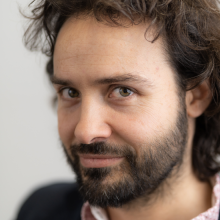
Matias Bonaventura
I joined CERN in 2014 working on the ATLAS Data Acquisition (DAQ) as a software engineer, and in 2019 I finished my PhD in Computer Science on the simulation of data acquisition networks. Since October 2022, I have taken up a staff position in the dataflow and readout teams within the ATLAS DAQ. I will be working on the specification, design and implementation of the future dataflow system for Run 4. Also, I will contribute to the operation and maintenance of the DAQ hardware and software infrastructures.
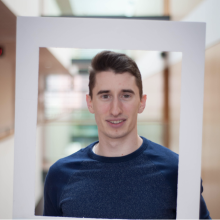
Alexandre Boyer
As a computing fellow, I contribute to the LHCb distributed computing needs within the EP-LBC group. I am improving the LHCbDIRAC workload management system, leveraging the WLCG computing resources to process LHCb user and production jobs. I am mainly involved in the designed, implementation and configuration of solutions to integrate LHCb applications in constrained but powerful environments such as supercomputers. This work primarily benefits to the LHCb experiment but also to the DIRAC community.
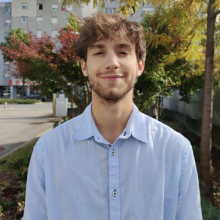
Mattia Busato
I am a nuclear engineer working in the EP-DT-FS gas group. In the team, I am in charge of the 3D designing of new gas systems as well as of performing fluid-dynamics simulations for studying new system components. I am co-responsible of the operation, maintenance and upgrade of the CMS gas systems and I am currently working on the design and construction of a R134a recuperation plant, which will be used to reduce GHG emissions from the RPCs detectors of ATLAS and CMS. I am also involved in the operation and construction of the CLOUD gas system as well as the system upgrade foreseen for 2023.

Sofia Cella
I am a CERN Marie-Curie Fellow, doing a PhD in Physics in the ATLAS Experiment. I got my Master’s Degree in Physics at the University of Milan and I’ve been a member of the ATLAS Collaboration since March 2021. During my PhD, I’ll be an Early Stage Researcher in the SMARTHEP Innovative Training Network, funded by the EU Horizon 2020 programme. I’m currently working on the ATLAS High-Level Trigger System, particularly on the monitoring and optimisation of the execution time performance. The goal is to maximise the performance of the Run 3 system and identify potential bottlenecks to be resolved for the Run 4 system.

Jana Cizkova
Hello, my name is Jana and I joined the ALICE secretariat team in October 2022 as a staff member. Before arriving to CERN I worked in different administrative roles in private and public sector, including 7 years in the EU administration. Me and my two colleagues in the secretariat, we provide administrative assistance to the ALICE Collaboration. We serve as a first line support for any administrative queries or issues and we work closely with the ALICE Management Team.
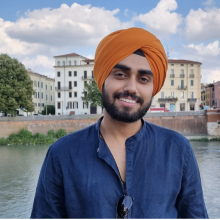
Jashandeep Dhaliwal
I joined the EP-ESE-ME in February 2022 as a student for my master's thesis titled "On-chip processing for pixel imagers in a 28nm technology for HEP application". I graduated in October 2022 in Micro and Nanotechnologies for Integrated Systems, which is a double-joint master’s degree among the universities of Politecnico di Torino, Grenoble INP Phelma, and ÉcolePolytechnique Fédérale de Lausanne (EPFL). Currently, I am a junior fellow (electronics engineer), since November 2022, in the same group and section under the EP-R&D Work-Package 5 to continue my work which aims to explore novel approaches to detector readout architecture in upcoming experiments. The objective is to reduce off-chip data throughput by performing programmable on-chip data processing.
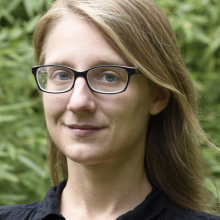
Leena Diehl
I joined the EP-DT department in October 2022 as a Senior fellow after finishing my PhD in physics in Freiburg. I am working within the CMS High Granularity Calorimeter project for the HL-LHC in the sensor group, doing characterisations and testing of the full sized sensors for production. During my time in Freiburg I was working mainly in the R&D sector, which I will continue with smaller HGCAL test structures, focusing on radiation damage effects. Additionally, I will be involved in the work towards highly granular calorimetry for future experiments in the framework of the AIDAinnova and the CALICE collaboration.

Simone Emiliani
I joined the EP-ESE-MicroElectronics section in February 2022 for the thesis of my master in Micro- and Nanotechnologies for Integrated System, a joint degree programme between Politecnico di Torino, Grenoble INP Phelma and EPFL. From November 2022, I am a fellow in the same section as part of the R&D Work Package 1.2 developing monolithic pixel detectors. In particular I will work on the design of the analog front end of the next ALICE inner tracker system.
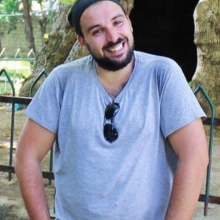
Saverio Mariani
Hello! I started as a Senior Research fellow in November and enthusiastically joined the EP-LBD group. Since my Master thesis, I have been working on the exploitation of the LHCb detector to perform fixed-target physics, leveraging on the injection of gas in the LHC. I will aim to transition from the commissioning to a full-scale physics output of the upgraded injection system, with a particular interest in measurements of cosmic-rays interest. I will also join the LHCb VELO team, working with them to improve the current detector performance and to contribute to the R&D towards future upgrades.
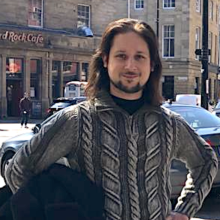
Julian Garcia Pardinas
I joined the EP-LBD group as a Senior Research Fellow in October. I have ten years of experience inside LHCb, having done my PhD in Santiago de Compostela, a first postdoc at the University of Zürich and a second postdoc as an EU Marie Curie Fellow at the University of Milano-Bicocca. My research has focused on data analysis, in the fields of CP violation and Lepton Flavour Universality, and on the development of machine-learning algorithms for event reconstruction. I will devote the upcoming period to the study of semi-tauonic B decays and the development of new algorithms for trigger purposes.
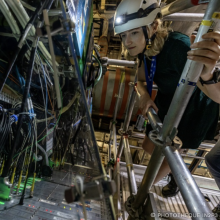
Ellis Kay
I have worked on ATLAS since starting my PhD at the University of Liverpool, where I focussed on exotic searches for new heavy gauge bosons with leptonic final states. I later joined the University of Victoria as a postdoc, participating in searches for Dark Matter in simplified models and joining the Liquid Argon Calorimeter team for the commissioning of the Phase-I digital trigger. As LS2 came to an end, I became a Data Quality coordinator for the subdetector. During my Senior Fellowship, I will continue my mandate as coordinator and work on the ongoing integration of the new trigger system.
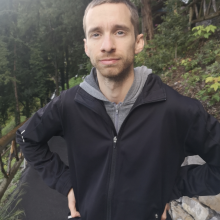
Simon Lechner
My work at CERN started in 2017 as PhD student, then as user and now I am a Research Fellow since November 2022. I will be working on the MIRACLS experiment at ISOLDE, which is a new highly-sensitive laser spectroscopy technique to study the nuclear structure of rare radioactive isotopes. The goal is to finish building the experimental setup and perform the first measurements. The setup consists of two ion traps: a buffer-gas filled Paul trap and a multi-reflection time-of-flight device.
Furthermore, these two traps will be later used as ISOLDE's high-resolution mass separator. This is a prerequisite for the PUMA experiment, which wants to bring antiprotons from the AD to ISOLDE to probe the nuclear surface.
Furthermore, these two traps will be later used as ISOLDE's high-resolution mass separator. This is a prerequisite for the PUMA experiment, which wants to bring antiprotons from the AD to ISOLDE to probe the nuclear surface.
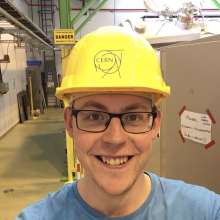
Patrick T MacGregor
I am a nuclear physicist, originally from the UK, and spent the last four years as a user of the ISOLDE facility during my PhD and postdoctoral research. I have recently been appointed as a fellow working with the ISOLDE Solenoidal Spectrometer. It is a repurposed MRI magnet filled with different detectors for measuring the energies and positions of nuclei. My work will focus on using this device to probe nuclear structure via transfer reactions, where individual nucleons are transferred from target to beam (or vice versa) within a strong solenoidal magnetic field. I also manage the tours of ISOLDE!

Pierre Pelissou
I am a R&D engineer at CERN, in the EP-DT group, following a previous internship at Airbus. As a Junior Fellow, I am involved in the EU-project RADNEXT. My tasks focus on the work package aiming to implement a roadmap and pre-design of future irradiation facilities for testing detector and accelerator components. I am also contributing to the operation of the EP irradiation facilities (IRRAD in particular focusing on beam instrumentation devices) and responsible for the CERN databases related to worldwide irradiations facilities and test-beam lines. I am looking forward to making the most of this unique experience and developing my personal and professional skills.
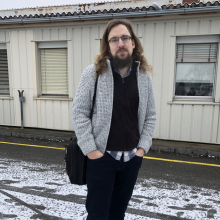
Michael Pesek
I joined Isolde group as a fellow in November 2022. Before I was a user at COMPASS experiment where my main responsibility was the polarised target. This experience allowed me to start my current project of radiation-detected zero to ultra low field nuclear magnetic resonance. This project combines two special types of NMR - radiation-detected NMR where the signal from the polarised nuclei is detected via radiaoactive decay, and ZULF NMR, which, contrary to standard NMR, does not require large magnetic fields. This technique could provide compact NMR setup which could find use in both chemistry and medical applications.
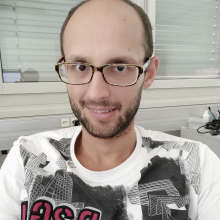
Ivan Ravasenga
I am a CERN Research Fellow since October 2022. Since 7 years, I'm working on the electrical characterization, data quality control (QC), calibration of the new low-material budget ALICE inner tracker based on silicon monolithic pixel sensors, currently taking data in Run 3. I work also as a coordinator of the QC and calibration teams. The plan for my Fellow is to continue the mentioned activities and move, from mid-2023, to the development of procedures to handle large 65 nm chips foreseen for the new Inner Barrel Tracker (ITS3) in Run 4, including their mechanical characterization and wafer post-processing.

Polyneikis Tzanis
Hi! I am Polyneikis Tzanis and I recently joined the CMS Central DAQ team (EP-CMD) working on the Phase-II Data Acquisition Software & Electronics Integration. Especially, I will take the lead in designing a vertical DAQ column which will be able to read data from the back-end electronics of the various sub-systems and to transfer this data through an event builder to a HLT farm. In addition, I will work on the design and implementation of a controller application into the online DAQ system for custom hardware being designed for Phase-II Data Readout and Trigger and Timing Control (DTH-400 and DAQ-800). Previously I was working at ATLAS experiment and especially on design, development and commissioning of industrial control systems and the data acquisition system for the New Small Wheel Upgrade Project.
